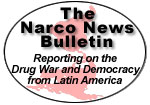
|
UFO - Do UFOs exist? Some evidence supporting that
~09
---------------------------------------------------------------
~15
Do UFOs Exist? Part 1
~03
Boris Karloff Oct 15, 1994
~09
---------------------------------------------------------------
~03
I would suggest that the question here lies in two segments,
each requiring separate investigation and possessing different
degrees of plausibility. The first being, "Does extra-terrest-
rial life exist?" and the second, "If so, does their technology
permit their visitation and study of our planet?" First I shall
deal with the overly pondered and virtually inexhaustible
subject of the plausibility of alien life.
"Space," to quote Douglas Adams, "is big. Really big. You just
don't know how vastly, hugely, mindbogglingly big it is... 1"
and on it goes. This somewhat humorous excerpt is also quite
accurate. Our solar system is but a tiny fraction of the
available area of space. The stars we see are but a minute
group of suns in an inconsequentially small area of space.
Compared to the whole, not just our planet but our entire solar
system, is insignificant. Out of all the suns available, all
the unknown systems, the limitless boundaries of space, I
believe that there are countless numbers of lifeforms both
plant and animal, intelligent and non-intelligent, both similar
and dissimilar to our own. To believe otherwise woule be naive.
To think we are the only life forms in our universe reeks of
egotism and ignorance mankind is known for. I can hardly enter-
tain, not to mention fathom the idea we are alone... simply
because the chances of that are astronomically small taking
only the vastness of space into account.
Recently I had the pleasure of reading a small article on
Martyn Fogg, a British astronomer. With the help of the
Probability Research Group at the University of London's
Birkbeck College, he devised an experiment which would show how
likely the possibility of extra-terrestrial life was in our
near surroundings. Fogg used a computer similation to devise a
mathematical sky sweep of approximately one million stars in
our own Milky Way. Two groups were formed as contenders; the
first being biocompatible, capable of sustaining life, and the
second, habitable, suitable for Earth-like conditions. Now in
order for life to survive on a planet, a regular, constant
orbit is required. This produces reliatively constant tempera-
tures and atmosphere, with erratic changes reduced to a minimum.
In order to achieve this, a star must consist of gaseous
nebulae, containing substancial heavy elements. Now for this
star to have orbiting a biocompatible planet, it must generate
sufficient surface temperature to allow water to maintain a
liquid state. Martyn Fogg's sky sweep turned up twenty eight
stars that met the above criteria... in our own galaxy, the
farthest being twenty two light years away. All of these had
the possibility of carrying orbiting, biocompatible planets.
Alpha Centauri A according to Fogg, has the highest probability
of possessing a world where life could exist. The key point
here is the close proximity in which these plausibly life-
bearing stars exist. Taking the entire universe into account,
starts having such qualities could quite literally number in
the trillions... and more... And of those trillions, a small
percentage (if not more) would have orbitting life-sustaining
planets. Of those, undoubtedly, a number would have thriving
populations of life-forms.
To fully comprehend the possibility of extraterrestrial life,
let us start at the beginning... when beliefs of life forms
other than our own first appeared in documentation. From as
early as 585 B.C. (Julian Calendar) claims were made as to the
belief of alien life. The first recorded claim being made by
Thales of Miletus, (who predicted the first eclipse), when he
proposed that the stars were other worlds. The second such
claim was made by his student Anaximander, who elaborated on
the idea that the number of worlds was infinite, some being
created, and some dying at all times. These initial claims
primed, so to speak, the foundation of some of the most
compelling evidence supporting claims of life elsewhere in our
universe.
Some of the most persuasive evidence supporting the existence
of extraterrestrial life comes from research derived from
foreign matter falling to the earth's surface. On March 15,
1806, the first recorded incident of this type occured when a
piece of black material plunged into the earth near the village
of Valence. Twenty eight years later, J. Jacob Berzelius, the
great Swedish chemist found to his amazement, that the material
was rich in carbon compounds, very much like humus (a mixture
of animal and vegetable remains). Berzelius concluded from his
experiments that it could possibly give an indication of the
presence of organisms on extraterrestrial bodies.
In 1857, another such object was discovered at Kaba, in Hungary.
Friedrich Wohler, a student of Berzelius, extracted an oil with
a strong bituminous odor. The organic material occupied a small
part of the object, but nevertheless was most definately there.
On May 14, 1864, another object crashed into the southern area
of France. The Orgueil meteorite. S. Cloez, a French scientist,
examined it and concluded that it "would seem to indicate the
existence of organized substances in celestial bodies," meaning
living remains in those celestial bodies.
These occurances have repeated themselves numerous times to
date, but climaxed in 1960, when Melvin Calvin and Susan K.
Vaughn reported their results of a study on another celestial
object that had fallen near Murray, Kentucky, to the First
International Space Science Symposium. "Extraterrestrial Life:
Some Organic Constituents of Meteorites and Their Significance
for Possible Extraterrestrial Biological Evolution," was the
name of their paper. In it they explained how samples of the
meteorite were vapourized and passed through a mass spec-
trometer designed to show the relative masses of molecules that
ran through it. The sample was showered with a beam of
electrons, ionizing its molecules. These were then forced
through a magnetic field that bent their flight path. Since the
extent of the bend was jurisdicted by the weigh of each
molecule, the stream could be analyzed for its abundances of
molecules of different weights.
Using five solvents, water and carbon tetrachloride among them,
materials of various kinds were extracted and analyzed in terms
of their absorption of infrared and ultraviolet light. The
tetrachloride extract showed the infrared spectra of methyls
and methylenes, and the ratio between them suggested the
presence of molecules built on chains of fifteen or more carbon
atoms. The water extracts were studied under ultraviolet light
and the variations of the spectra at different acidities, were
those typical of cytosine, one of the four bases that carries
the "code of life" in the DNA molecule. If that isn't enough,
the following year, a piece of the meteorite was subjected to
petroleum research techniques at the Esso laboratories in
Linden. After distilling the sample, and the hydrocarbons were
extracted, they were passed through a mass spectrometer. Some
of the hydrocarbons proved to be built on chains of as many as
twenty-nine carbon atoms, and showed remarkable resemblance to
the paraffins and other hydrocarbons found in living matter.
One constituent of an assortment of paraffins seemed related to
the cholesterol found in blood.
Those examples of foreign life, are the building blocks of some,
and the remains of other extraterrestrial life. Many may be
plant life, some may be intellectual life; but where you find
one, you will also find the other. It is just a matter of time
in the evolutionary scale of life... time, and aspect the
universe has an abundance of. From the sheer mass of space,
and the law of averages, to the materials we have intercepted
from that mass, there is much more room for belief in the
plausibility of life elsewhere, than for disbelief.
Now what is the possibility of these life-forms having the
technology to physically explore our planet? Taking the law of
averages into account, our technology is inferior to half of
other civilizations, and superior to the other half. If this
is so, there is more than a distinct possibility that many,
many worlds have the ability to traverse our segment of space.
Nevertheless it is possible we have been, are being, and will
be visited in the future. Numerous inexplicable craft have been
spotted, visually and with radar, remnants are claimed to exist
from sources incapable of receiving any form of benefit from
such claims, information on the above is not disclosed, and for
what reason? Some other life-forms have traversed to this
planet, and undoubtedly others. The only question I ponder is
the frequency at which they visit...
In 1961, during a conference at the National Radio Astronomy
Observatory in Green Bahk, West Virginia, a group consisting of
optical astronomers, radio astronomers, an astrophysicist, a
physicist, a biochemist, a chemical investigator, and some
specialists in communications met to discuss the subject of
"Intelligent Extraterrestrial Life." This group called them-
selves "The Order of the Dolphin," as one of the communications
experts specialized in the "language" of the dolphins. It was
during this conference that Melvin Calvin received his Nobel
Prize, and the conclusion of this meeting yielded a unanimous
belief that the number of civilizations that may have evolved
to the point where they could communicate with other solar
systems was large; although impossible to accurately estimate.
One year later, in 1962, the giant, federally owned radio
telescope at Green Bank was used in Project Ozma. It was aimed
at nearby stars to see if intelligent signals were emanating
from them. Shortly thereafter, in 1964, the "Extraterrestrial
Civilizations" conference was held at the Burakan Astrophysical
Observatory, one of the finest in the Soviet Union at the time.
It was here, that in the following year, CTA-102, an object
emitting radio signals from space, was discovered.
When the seventies closed in, most information of this nature
suddenly diminished into the realms of obscurity. Information
on all experiments of extra-terrestrial nature was witheld by
the government, now employing these great bodies of information.
Observatories are little permitted for use by the public, and
all experimentation is now performed behind locked doors within
the grips of the ever tightening fists of our governments.
There is proof of alien life, the vast majority of it though,
is kept from us.
In conclusion I would like to state the possibility of life in
the great expanses of the universe should not be questioned, it
should be taken for granted. To think otherwise would not only
put a devasting burden on mankind, but would make that great
area of space a waste of creation. For one species to make use
of the heavens above is a mouthful God himself could not
stomach. We are not alone, nor will we ever be. The stars are
full of life, to match in direct proportion the beauty of our
universe and the secrets it holds for our, and others',
discovery.
~09
---------------------------------------------------------------
~15
Bibiography
~03
"The Hitchhicker's Guide to the Galaxy," copyright 1984, Pan
Books, London.
Information on Martyn Fogg acquired from "The Probability
Reasearch Group," and "Omni Magazine" vol 16 no 11.
Pearman, J. P. T., "Extraterrestrial Life and Interstellar
Communication: An Informal Discussion," Item 28 in A. G. W.
Cameron (ed.), Interstallar Communication, A Collection of
Reprints and Original Contributions, W. A. Bemjamin, Inc.
(New York, 1963).
Lucretius, The Nature of the Universe, translated with an
introduction by Ronald Latham, Penguin Books (Baltimore,
1951).
Anders, Edward, and G. G. Goles, "Theories on the Origin of
Meteorites," Jour. of Chemical Education, vol 38 (Feb. 1961)
Frondel, Clifford, "Minerological Problems Presented by
Meteorites," National Acedemy of Sciences Paper (Wash., D.C.
April 29, 1964).
Calvin, M., and S. K. Vaughn, "Estraterrestrial Life: Some
Organic Constituents of Meteorites and Their Significance
for Possible Extraterrestrial Biological Evolution," Space
Research: Proceedings of the First International Space
Science Symposium, Hilde Kallmann, ed., North-Holland Publ.
Co. (Amsterdam, 1960).
Anders, Edward, and F. W. Fitch, "Search for Organized
Elements in Cabonaceous Chondrites," Science, vol. 138 (Dec.
28, 1962).
~09
---------------------------------------------------------------
~03
|

|

